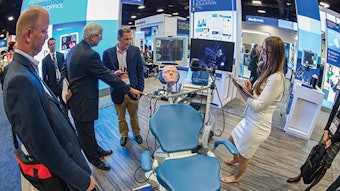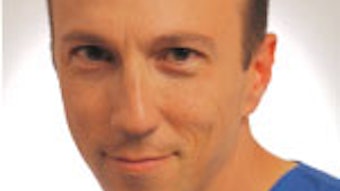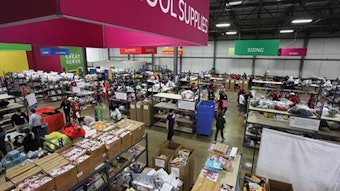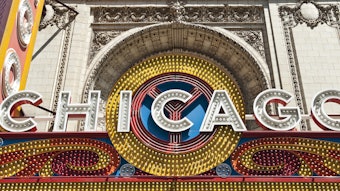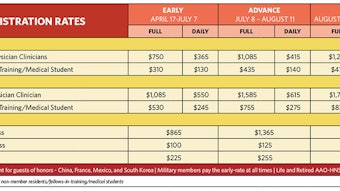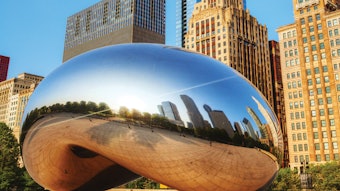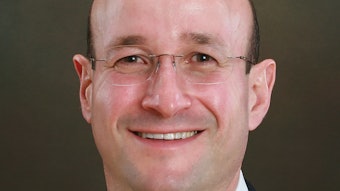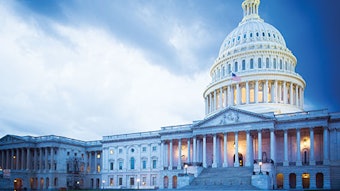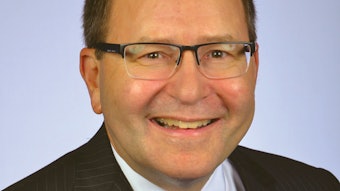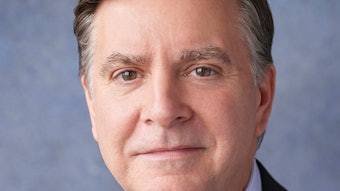Better Hearing and Speech Month: Noise-induced hearing loss through time
A historical look at hearing conservation efforts for the U.S. workforce and consumers.
A historical look at hearing conservation efforts for the U.S. workforce and consumers
James C. Denneny III, MD AAO-HNS/F EVP/CEO
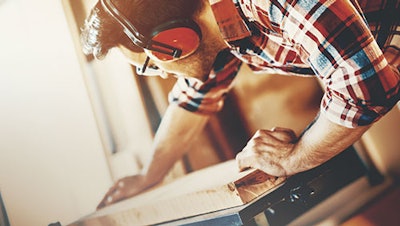
A great deal of attention has been paid to industrial or occupational exposure to high levels of noise and the resultant sensorineural hearing loss. Educational and regulatory interventions have dramatically reduced the severity and frequency of this problem. However, the equally damaging noise exposure associated with personal activities seems to have accelerated with changes and availability in technology. This month’s article on NIHL will feature historical initiatives launched on behalf of the workforce in the United States as well as educational efforts designed to alert the consumer to the dangers of excessive noise in the recreational setting.
Occupational NIHL
Even though loud noises have been recognized as detrimental to hearing for centuries, the breadth of the problem surfaced during the Industrial Revolution as hordes of workers were exposed to the excessive noise attributed to the rapid mechanization of industry during that time. Despite the fact that exposure to occupational noise was recognized as the cause of hearing loss in many industries, little effort was made during the Industrial Revolution to protect workers from injury due to multiple causes, including noise exposure.
Interest in hearing conservation started in earnest during World War II. Since that time, multiple researchers and clinicians have contributed to the knowledge base essential for understanding and addressing the problem. Critical questions that were answered during this time included: What is normal hearing, and how do you measure hearing and hearing loss accurately? How much noise is safe, and how long can one be exposed before damage occurs? How do you measure noise in industry? How do you measure hearing impairment and handicap?
Many consider Hallowell Davis, MD, as the “Father of the Modern Science of Hearing and Hearing Loss.” Aram Glorig, MD, an otolaryngologist, focused on hearing and hearing conservation through military research and participation in many committees, including the American Academy of Otolaryngology, known then as the American Academy of Ophthalmology and Otolaryngology, and was particularly active on the West Coast of the United States. Joseph Sataloff, MD, was a prominent leader in this field on the East Coast of the U.S.
As more information relating to the devastating effects of occupational noise exposure became known, there was an expanding interest by many societies including the American Medical Association and the American Academy of Otolaryngology—Head and Neck Surgery. The Hearing Conservation Committee of the AAO-HNS played a major role in developing hearing conservation programs and educational materials that helped establish standards related to the issue. In 1948, the United States Circuit Court of Appeals ruled that industrial personnel with occupational hearing loss were entitled to compensation even though there was no loss of time or earnings. This triggered expansion of Occupational Safety and Health (OSHA) Noise Regulations and has resulted in the compensable injury for NIHL. Floyd Van Atta, MD, oversaw the meetings of the OSHA Noise Committee during the time when the standards included in the final regulations were detailed. The 30-some years following the establishment of the standards have seen generalized compliance from most industries, but there still remains work to be done. Due to the work of many of the pioneers in our specialty, thousands of cases of NIHL have been prevented or lessened.
Recreational NIHL
It is an inherent obligation for our specialty to try to duplicate the successful model and documented improvement demonstrated by the occupational hearing loss model when dealing with recreational NIHL. The Academy has been a leader in this area over time through its Hearing Committee, Board of Governors, Education committees, and combined efforts with multiple other stakeholders. As leaders of the Coalition for Hearing and Balance and America’s Hearing Healthcare Team Initiative, we participated in many public awareness and education campaigns over the years, including direct contact with industry. These discussions led to limitation warnings on electronic devices, including a variety of tablets, phones, and music players. Unfortunately, these can be bypassed by the consumer. NASCAR has promoted the use of hearing protection at its racing events as well.
We still have work to do on public education as to the equivalence in the danger of recreational and occupational sound and the need to recognize potential danger and protect oneself when faced with a variety of situations. The most common of these include road noise, sporting events, gunfire, live concerts, loud recorded music, and other audio programming. It is also important for the public to understand that single exposures can also create hearing loss and tinnitus. Most are familiar with the phenomenon of “temporary threshold shifts,” but must realize that there are times when these do not recover, and people should not rely on this phenomenon to protect their hearing.
The Academy will continue to educate members of the public regarding their safety on this and other issues within our field.
I would like to thank Robert Thayer Sataloff, MD, and his father Joseph Sataloff, MD, for their contributions to this article through personal discussion in their textbook Occupational Hearing Loss.
References
Sataloff RT, Sataloff J. Occupational Hearing Loss. 3rd ed. Boca Raton, FL: CRC Press; 2006.
Sataloff RT, Lalwani AK. Sataloff’s Comprehensive Textbook of Otolaryngology: Head & Neck Surgery. Philadelphia, PA: JP Medical Ltd.; 2015.
Casani AP, Piaggi P, Cerchiai N, et al. Committee on Hearing and Equilibrium Guidelines for the Diagnosis and Evaluation of Therapy in Meniere’s Disease. Otolaryngol Head Neck Surg. 1995;113(3):181-185.

